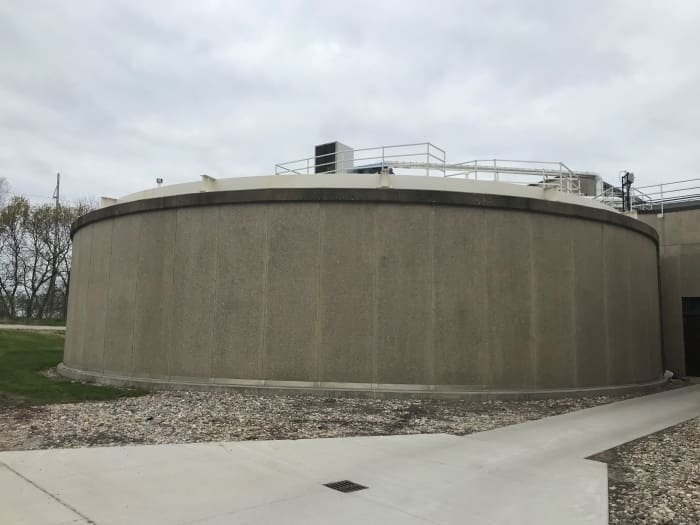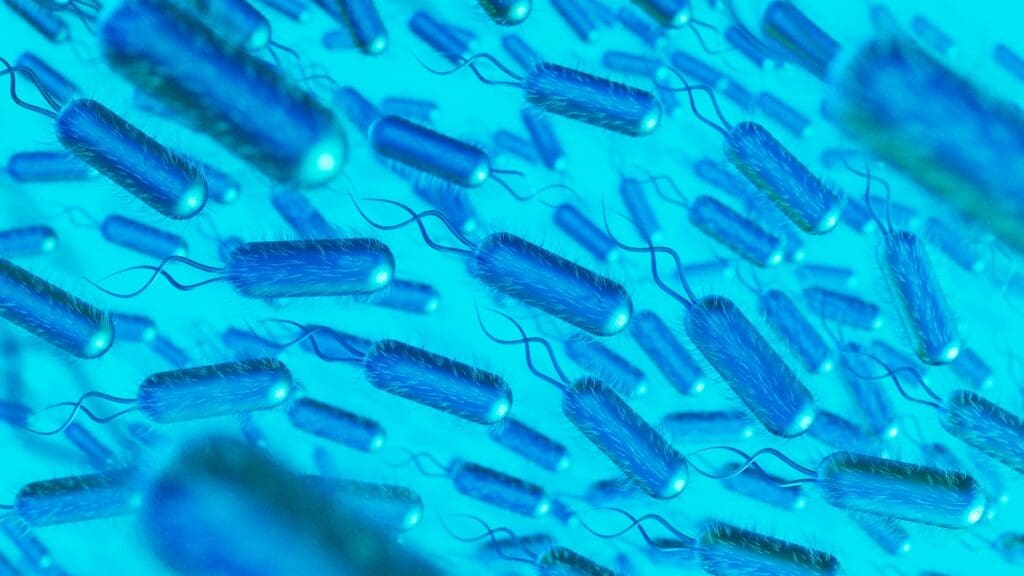Strategically planting perennial grass throughout corn and soybean fields helps address the unintended environmental consequences of growing the dominant row crops, including soil erosion, fertilizer runoff and greenhouse gas emissions.

But converting portions of farmland back to prairie has to make financial sense for farmers, which is why a research team led by Iowa State University landscape ecologist Lisa Schulte Moore has spent the past six years studying how to efficiently turn harvested grass into lucrative renewable natural gas.
“We’re looking at existing markets where there is already a demand, use existing infrastructure to reduce costs of the energy transition and create wins in multiple categories. We want wins for farmers, wins for businesses, wins for municipalities and wins for society,” said Schulte Moore, professor of natural resource ecology and management and director of the Consortium for Cultivating Human And Naturally reGenerative Enterprises (C-CHANGE). “We can have great conversations about what could be, but unless it benefits everyone along these supply chains, it won’t happen.”
A pair of recently published peer-reviewed articles by Schulte-Moore’s research group modeled the economic feasibility of grass-to-gas production in different settings and from varying perspectives, analysis that helps flesh out the system’s win-win potential.
“To replace natural gas with resources that revitalize sustainable agriculture, we have to be able to quantify how much energy we can produce and show it can be cost effective and environmentally friendly,” said associate professor of mechanical engineering Mark Mba-Wright, co-author of the studies.
City-based scenarios
The ongoing research is funded in part by a $10 million federal grant in 2020, another $10 million in federal support in 2022 and about $650,000 from the Walton Family Foundation. The work centers on optimizing and expanding the use of anaerobic digesters. Biogas is released in anaerobic digestion, the natural process of organic matter biodegrading without oxygen. Captured in tank-like digesters, biogas can be processed into a fuel that easily swaps in for petroleum-based natural gas. It also can power electrical generators and produce fertilizer.
In a study1 published in BioEnergy Research, the Iowa State researchers modeled how a network of digesters in and around Ames could supply the city’s heat and power demands. Livestock manure, biofuel byproducts, food waste and wastewater would join grassy biomass as the feedstock supplies for up to 10 digesters. The locations, size and number of facilities depended on whether the network was designed primarily to produce natural gas or power.
The analysis found renewable natural gas was the most economically practical focus, with a levelized cost roughly twice the historical average price of traditional natural gas. Incentives supporting clean energy production could provide a boost to make pricing competitive. Regardless, seeing how digester supply chains would work to serve municipal needs helps city leaders envision possibilities, Mba-Wright said.
“We wanted to consider the seasonality of the supply and demand over a year to give a mayor, for instance, scenarios to look at and strategize around,” he said.
Researchers have discussed anaerobic digestion with municipal wastewater officials in several cities in Iowa, and generally they’ve been curious, said Schulte Moore, co-director of the Bioeconomy Institute and a 2021 MacArthur Fellow.
“Their immediate need is to provide a service to their customers 24-7. But they work on 15- to 30-year planning horizons, so they’re also thinking about the future,” she said.
A grass-to-gas road map
A study2 published in Global Change Biology Bioenergy modeled the economic and environmental impact of two hypothetical digesters processing grassy biomass in the Grand River Basin in northwest Missouri and southwest Iowa.
Over their expected 20-year lifespan, the digesters would produce a combined profit of more than $400 million under the best conditions, based on the researchers’ analysis. The 45 million gigajoules of renewable natural gas created over two decades – equal to about 12.5 billion kilowatt hours – would have a carbon footprint 83% lower than natural gas derived from fossil fuels. Emissions also project to be lower than those from corn-based ethanol or soybean-based biodiesel.
Most existing anaerobic digesters that produce renewable natural gas have run on dairy manure, so it’s essential to pencil out how they would perform on a grass diet, Mba-Wright said.
“This is dotting our ‘i’s and crossing our ‘t’s to confirm the benefits are what we’d expect. We’re providing a road map to help build infrastructure, which will in turn reduce future costs,” he said.
The profitable scenarios examined in the study rely on existing carbon credit programs, including the California Low Carbon Fuel Standard and federal Renewable Fuel Standard. The most valuable outcomes also require high-yield grass and prairie restoration on some of the least-productive farmland.
Researchers aimed to be as realistic as possible in both studies, accounting for all known costs – including capital expenses. But they’ll be even more accurate in the coming years, as methods improve and new research results roll in, Schulte Moore said.
“In the future, we will refine our models by plugging in data our research teams have collected right here in Iowa,” she said.
More information: 1. Irene Mas Martin, Alvina Aui, Pallavi Dubey, Lisa A. Schulte & Mark Mba Wright, ‘Optimal Production and Dispatch of Renewable Natural Gas, Electricity, and Fertilizer in Municipal-Scale Anaerobic Digestion Supply Chains’, BioEnergy Research (2024); DOI: 10.1007/s12155-024-10767-y 2. Olumide Olafasakin, Ellen M. Audia, Mark Mba-Wright, John C. Tyndall, Lisa A. Schulte, ‘Techno-economic and life cycle analysis of renewable natural gas derived from anaerobic digestion of grassy biomass: A US Corn Belt watershed case study’, GCB Bioenergy (2024); DOI: 10.1111/gcbb.13164 | ISU Press Release/Material. Featured image credit: kjpargeter | Freepik




